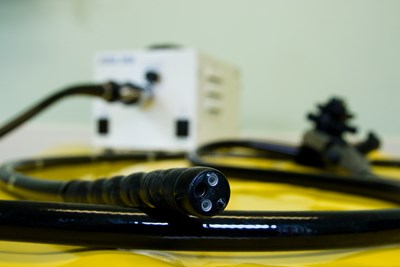Most endoscopies entail a long tube with a light and camera attached. A doctor sends this into the mouth (upper endoscopy) or into the rectum (colonoscopy or sigmoidoscopy) and watches the devices process on a nearby monitor. The patient is given a light sedative,and can even watch the process, if they want.
While this particular procedure allows access to organs and areas that can be hard to view, even endoscopy has difficulty reaching the small intestine. Although the upper endoscopy goes all the way to the duodenum (the opening of the small intestine), and the colonoscopy can view the colon, neither can get all the way through the small intestine. In this case, a capsule endoscopy may be necessary.
What is it?
A capsule endoscopy is exactly what it sounds like—an endoscope in capsule form. Quite literally, the video camera is the size and shape of a pill (admittedly a rather large one), complete with its own “flash.” You swallow the camera and wear a device on your body that the camera sends pictures to as it travels through the digestive tract. It usually takes a week for your doctor to review the pictures and report back to you with your results. When capsule endoscopy is used, doctors are typically looking for ulcers, tumors, polyps, Crohn’s disease, or the cause of internal bleeding.
How does it work?
The process is pretty simple, and most people suffer no discomfort. After abstaining from food and drink for about twelve hours, you go to your doctor’s office and swallow the camera. Your doctor will attach the receiver to your abdomen, and you’ll wear it for about eight hours. Generally, after two hours, you can drink water, and after four hours you can have a light meal. In most cases, extreme physical exertion should be avoided, although your doctor may have other recommendations. When those eight hours are up, you go back to the doctor. She will remove the receiver, and then you wait to pass the camera. It is recommended to stay away from MRI machinery until the camera is excreted.
What are the risks?
The biggest risk of capsule endoscopy is obstruction, which occurs when the capsule gets stuck in the intestines. This is usually due to specific pre-existing issues, like a narrow intestinal tract, which can be caused by a tumor or previous surgeries. If you experience any bloating, vomiting, abdominal pain, or nausea, call your doctor immediately.




